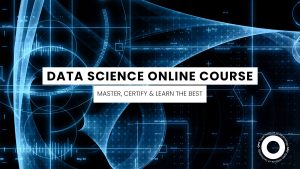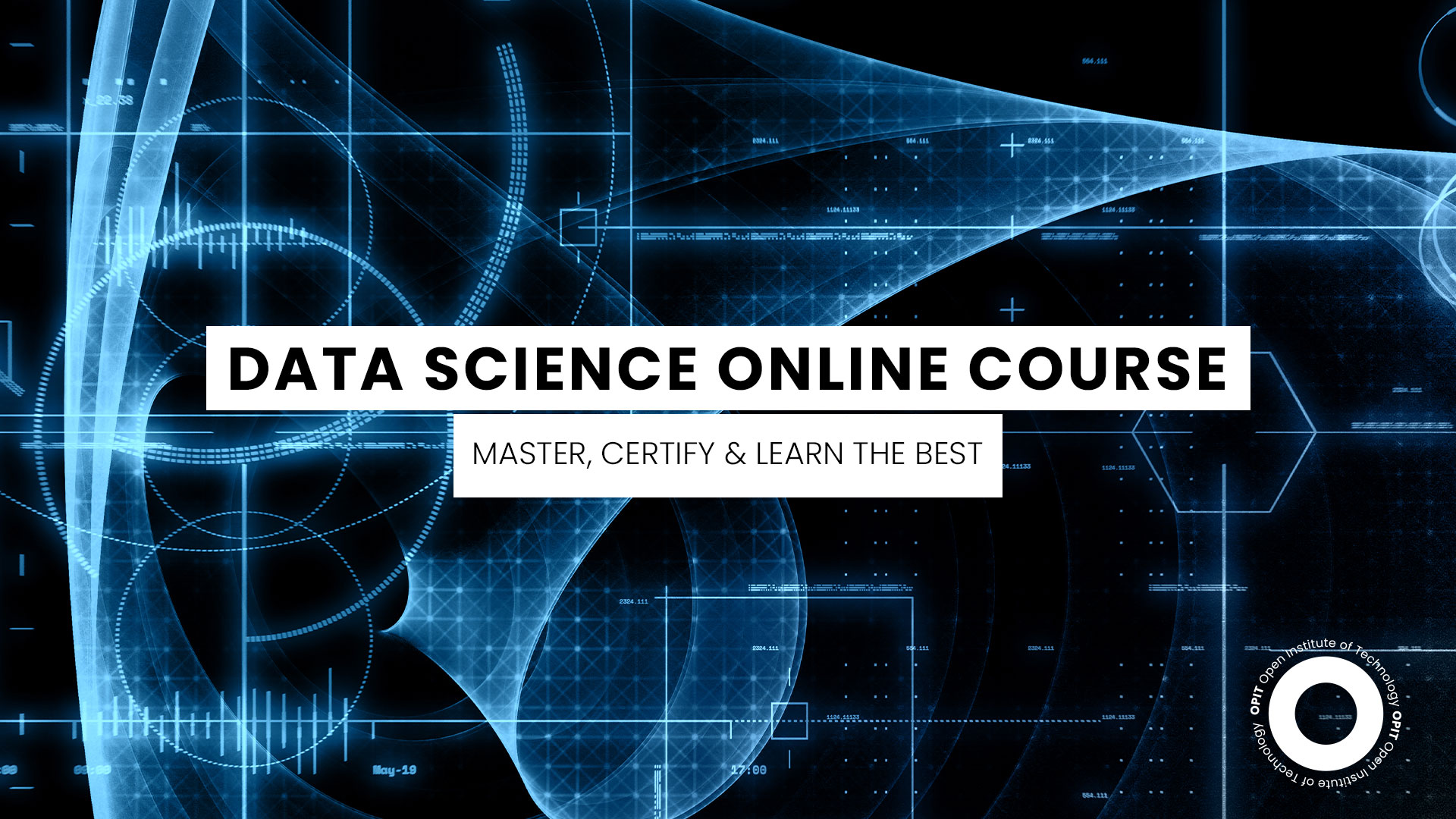Digital technologies pretty much run the modern world. From our phones and computers to manufacturing, finance, and retail, so many aspects of life rely on machines crunching unimaginable quantities of data.
As a discipline at the core of this digital era, data science is still expanding its scope. Leading organizations in this sector never seem to get enough of new talent, and the demand for data science specialists is constantly rising.
Luckily, the same digital-first environment that depends on data science also gives ample opportunities for learning this essential trade. You can easily find a data science course online, and the same goes for certifications. Better yet, there are Masters programs you can take without leaving your home.
If the prospect of online data science courses sounds exciting, this article will recommend some of the best available programs.
Top Data Science Online Courses
There’s no shortage of options to learn data science online. The courses that made our list come from prestigious institutions and offer the most comprehensive approach to the subject.
When choosing the top courses, we followed straightforward criteria. We looked into institution reputation, hands-on experiences, lecture quality, and comprehensiveness. Here are the best online data science courses that excelled in these categories.
Metis – Data Science & Analytics Training
If you’re looking for an online course with live lectures, then Data Science & Analytics Training from Metis will be a great choice. The lecturers come from leading tech companies, giving lessons that cover the complete data science process.
While there are advanced bootcamps on offer, Metis provides a comprehensive beginner data science online course with certificate, which lasts for six weeks. The price for this course is $750 (roughly 695 euros at time of writing). This course offers an accredited certificate.
Dataquest – Introduction to Python Programming
Dataquest is somewhat unique as it represents a knowledge repository for standalone learning or as a supplementary resource. If you want to learn data science with this platform, the Introduction to Python Programming course is a quality choice.
The class is brief, informative, and suited for beginners. It consists of six lessons and a practical project, with an estimated 12 hours needed to complete the self-paced course. While the introductory course doesn’t offer certification, it will open up a learning path with Dataquest that does end up in winning an expert-reviewed credential.
A third of the learning resources is available for free. The full access to Dataquest courses will require a subscription to the service with a monthly or yearly model.
Harvard University – CS109 Data Science
Getting education from Harvard is about as elite as one can get. The CS109 Data Science course embodies all the benefits of learning from a prestigious institution like Harvard. The course teaches data science essentials, including Python programming, statistics, and machine learning. The complete material is accessible on dedicated GitHub pages. You can clone the repository to get access to the entire curriculum.
Since this is just the repository of resources, going through them won’t give you a certificate. However, it’s free and completely available online, making it an educational opportunity you shouldn’t miss. With the detailed knowledge of the basics under your belt, you’ll progress to more complex (and pricier) courses with ease.
Check out OPIT degrees
-
Career aligned
-
Fully Online
-
EU-accredited institution
Online Data Science Master’s Programs
You might think that getting a master’s diploma requires you to physically attend a college. And while that used to be the case only a few decades ago, you can enroll in a master’s program online. Better yet, you may do so at a reputable institution with a world-leading data science department.
We picked several top-tier online data science masters programs online. Our choice was based on similar criteria as for the courses:
- How reputable is the institution?
- Does the program offer practical knowledge?
- Are the lectures comprehensive and quality-made?
With all that in mind, here are our top choices of online master’s programs in data science.
University of Aberdeen – Data Science MSc
The University of Aberdeen is one of the leading educational institutions in the UK. The Data Science MSc program is the university’s regular MSc data science online program that’s also completely available online. The curriculum includes vital skills concerning algorithms, data analysis, mathematical modeling, and more.
With full-time learning, the degree can be completed in one year. However, you can study at your own pace and take as much time as you need between individual courses. The limit for completion is six years, and enrolling in the program will cost £14,920.
Rome Business School – International Online Master in Data Science
The International Online Master in Data Science from the Rome Business School represents an excellent opportunity to learn, get in touch with industry-leading companies, and build a professional network. The school houses bootcamps across Europe and worldwide, which may increase your job market reach.
The participation fee for this program is €6,700. If paid after starting the course, applicants can split the cost into six installments, free of interest. Covering the fee in installments in advance will grant you a 5% discount. Paying in a lump sum comes with a 10% discount.
European Leadership University – Professional Master in Data Science & Leadership
The European Leadership University offers a comprehensive program that includes individual and group work, as well as interactive workshops. Completing the Professional Master in Data Science & Leadership program will earn you a master’s degree and two recognized certificates: in data science and leadership.
The program is priced at €5,000, with the option to pay the fee in five installments during the study period. Upfront payments come with a 10% discount. The program includes classes on machine learning, statistics, data collection and handling, Python programming, and more. This master’s course lasts for 19 months.
Key Skills to Learn in Data Science
Data science consists of numerous fields, some of which are more theoretical while other lean heavily towards practical applications. The later data science aspects include essential skills that you can use in the market:
- Programming languages
- Data visualization and reporting
- Machine learning and AI
- Big data
- Statistics
In programming, languages like Python, R, and SQL are used to create program environments and write specific commands. As a data science skill, the study of programming languages explores the limitations and possibilities of existing and new languages.
Data visualization deals with representing complex datasets in a more comprehensive way. It’s related to reporting and may be viewed as its subset. Visualization tools include charts, graphs, and presentations.
Machine learning might be the most well-known aspect of data science. Technologies like deep learning are at the core of AI development, enabling machines to learn from limited data input. Recently, great advances were made in unsupervised learning, which doesn’t require human input at all.
Big data refers to processing and analyzing large amounts of information. Handling massive data volumes presents specific challenges in terms of computational capacity and error reduction.
Finally, statistics form one of the cornerstones of practical data science use. Statistical analysis is helpful in business, demographics, and numerous social and natural sciences. Reliable statistics help researchers create predictive models and projections, allowing for efficient planning down the line.
Benefits of Earning a Data Science Certificate or Degree
Getting a degree or certificate in data science offers you an edge both in professional improvement and in the job market. The very process of gaining credentials is an opportunity to learn and practice essential skills. Plus, you can build a respectful portfolio along the way.
A degree or certificate means better job opportunities. Every reputable employer in the field will want to see recognized credentials from their applicants, and that’s particularly true when hiring for better-paid positions.
If you’ve already got a starting-level job in data science, credentials from reputable institutions will help advance your career. That kind of growth also creates a potential for better salaries and work benefits.
Finally, once you enroll in a data science degree or certificate program, you’ll meet other people pursuing similar interests. This will be an excellent opportunity for networking. Combined with the credentials, your new network of colleagues can help you advance even further.
Tips for Choosing the Right Data Science Online Course or Program
When you start searching for the right program online, it’s vital to consider several factors:
- The content and curriculum of the course
- Instructor expertise and reputation in the industry
- The duration of the program
- How flexible the course is
- Pricing and whether there are options for financial aid
- Testimonials or reviews from previous students
Besides these considerations, you should account for your personal preferences. Define your goals and what you want to achieve with the program. Also, it’s important for the program to match the learning style that suits you the best.
Check out OPIT degrees
-
Career aligned
-
Fully Online
-
EU-accredited institution
Gain the Essential Skills for the Hottest Profession Today
Our data science course suggestions include a selection of programs from the most respected industry leaders. With the high-quality courses on offer, all you’ll need to do is pick the program that matches your career goals.
Today’s job market has a high demand for data science experts. Getting certified or earning a degree in the field will help you start a career easier, which is why you should consider this important move as soon as possible.






